5 Traditional Cantonese Teahouses for Dim Sum in Hong Kong
By Elaine ZhaoThe Cantonese tradition of dim sum originated over 2000 years ago in the teahouses along the trade routes that connected Asia with the rest of the world: small bites to accompany tea choices that were designed to stimulate travellers’ appetites. Today, dim sum – or “yum cha” in Cantonese, which literally means to drink tea – is a ceremonious afternoon feast: to share steamed bamboo baskets of different delicacies alongside copious servings of tea. It’s a ritual ubiquitous in Hong Kong and deeply ingrained in our cultural identity. Here are five of the best places for a local and delicious Cantonese experience.
Sun Hing
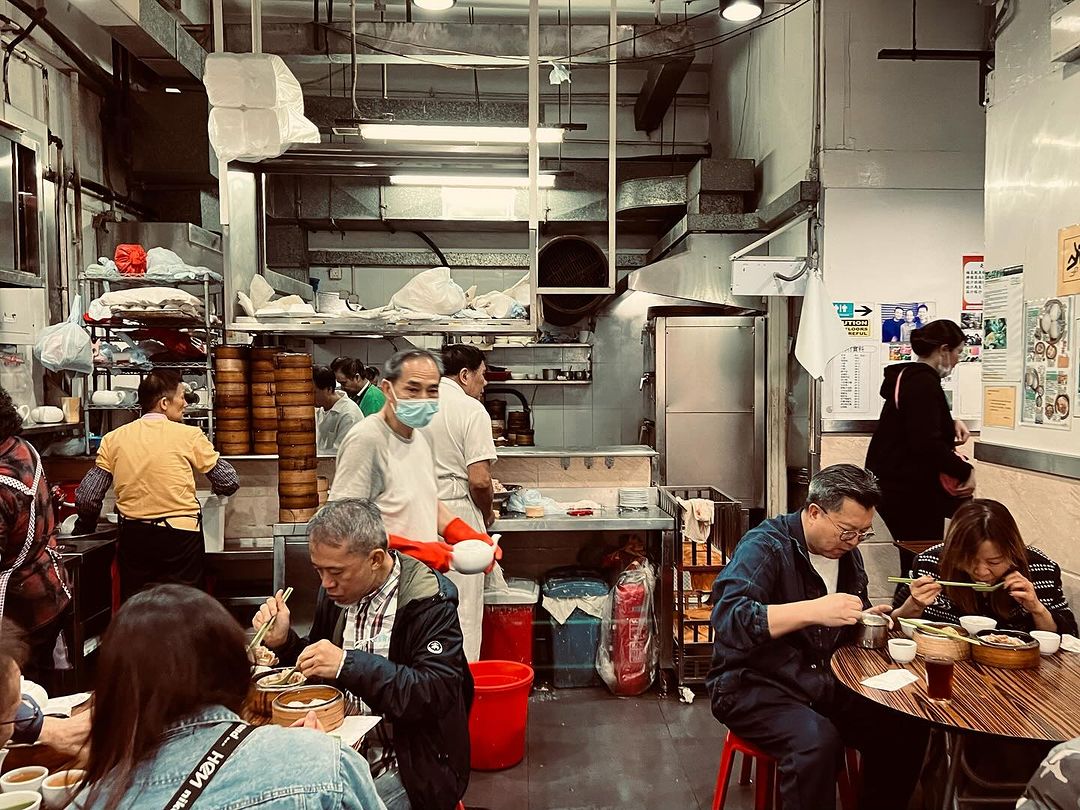
Every time I’ve been to this legendary hole-in-the-wall it has been absolute chaos in the best way. Having first opened in 1972, the owners have kept the same 3 a.m. opening time ever since – so I’ve only been right after a night out, in the early hours. The already cramped room is always packed, with each table shared by eclectic groups, usually ranging from drunken party-goers, Chinese grandmas on their way to morning tai chi, and solo early shift workers having breakfast.
Sun Hing has also maintained the Cantonese teahouse tradition of being fully self-service, from choosing your own leaves for your table’s teapot, to competitively opening steaming bamboo baskets of mystery goods at a cart by the wall. Everything is handmade and incredibly fresh – and while it has the usual classics like siu mai and har gau, it also has more old wave, traditional dim sum options rarely seen on modern menus. I remember a life-changing portion of salted egg custard lava buns during one 4 a.m. visit, so I’d encourage you to get those if they’re available.
Shop C, G/F, 8 Smithfield Road, Kennedy Town, Western District
Luk Yu Teahouse
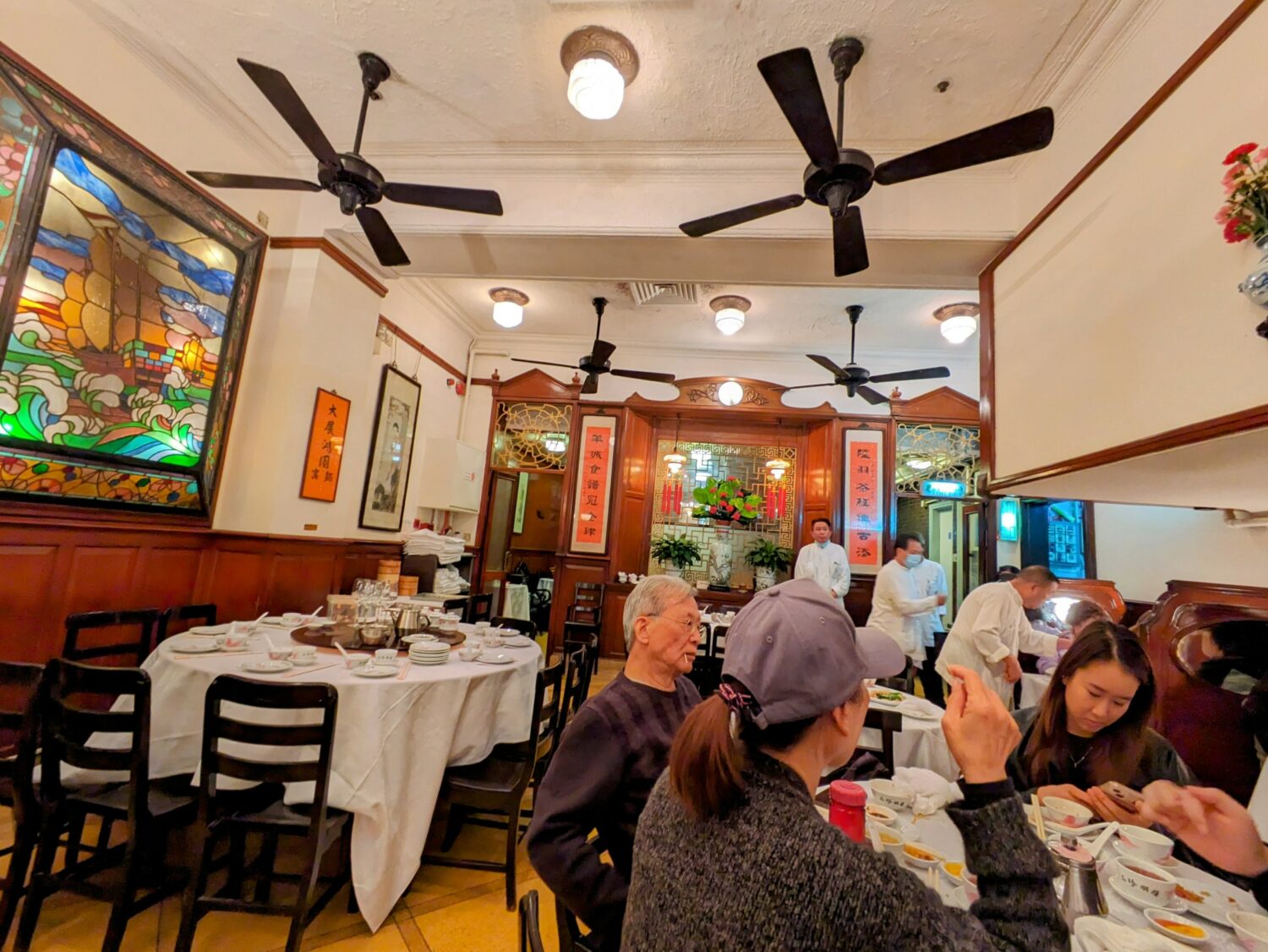
Having first opened in 1933, this long-running teahouse is one of the most iconic dim sum spots in the city. There are two levels: the ground floor is for long-serving regulars who can reserve tables in advance and has maintained its classic Cantonese decor of small wooden booths, ceiling fans and stained glass art. The top floor is for walk-ins which is where first time visitors will be guided by the bouncer standing outside the restaurant (definitely the only teahouse where I’ve seen this) to join long queues of hopefuls waiting for their table. (Although I have seen a man slip a $50HKD note into a bouncer’s hand who then let his group into the bottom floor, so you could also try your luck!)
This is the kind of place where anything you order will be carefully crafted and devotedly authentic: I would particularly recommend its siu mai, steamed dumplings with crab meat in pork broth, steamed spare ribs in ‘chu hou’ sauce, and Cantonese egg tarts. Just to note, it’s on the pricier side of dim sum because of its history and reputation (two of us paid $680 HKD or about $86 USD total) and service runs with extreme Hong Kong efficiency, so don’t be surprised if the waiters clear your plates as soon as you’ve had your last bite.
24-26 Stanley Street, Central
Tim Ho Wan
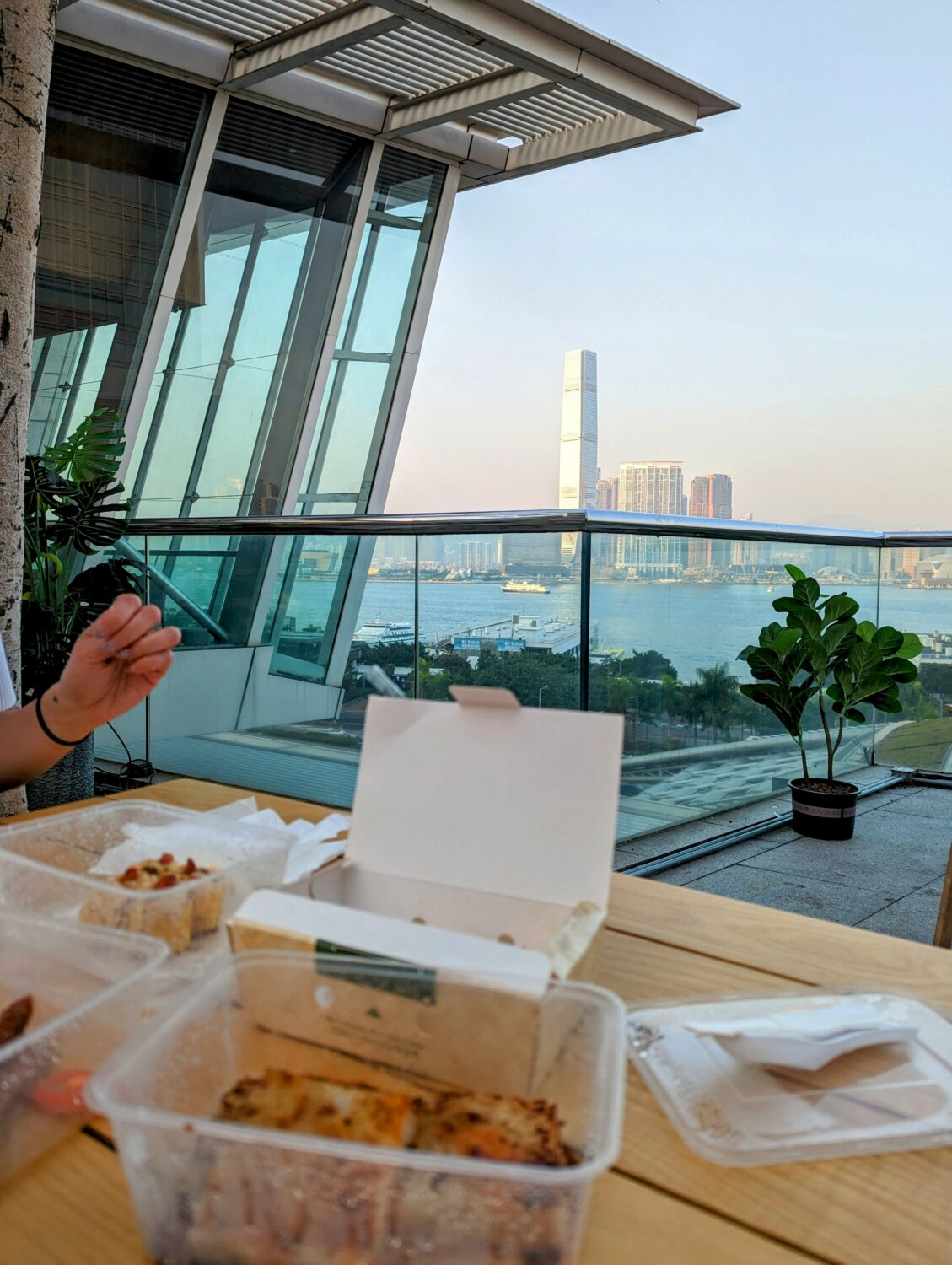
Self-proclaimed as the “world’s most inexpensive Michelin starred restaurant”, the original Tim Ho Wan, known for affordable but high quality dim sum, gained its Michelin star back in 2010 before expanding into multiple outlets worldwide. They offer all the classics: fried turnip cake, steamed spare ribs with black bean sauce, and my personal favourite: deep fried sticky rice flour dumplings filled with pork and dry shrimp (I can assure you that its Cantonese name is much more succinct).
My favourite branch is in the basement of IFC mall – which if you’re sitting in, provides a comfortable and convenient dining experience inside the Central train station. However, I’d recommend you order take out and go to the mall’s rooftop, where there is a public area with comfy dining tables and chairs that are free to use. This way, you can enjoy your meal al fresco whilst taking in the stunning views of Hong Kong’s skyline, for a fraction of the price of the restaurants next door.
Shop 12A & 12B, Level 1 MTR Hong Kong Station, Central
Chau Kee
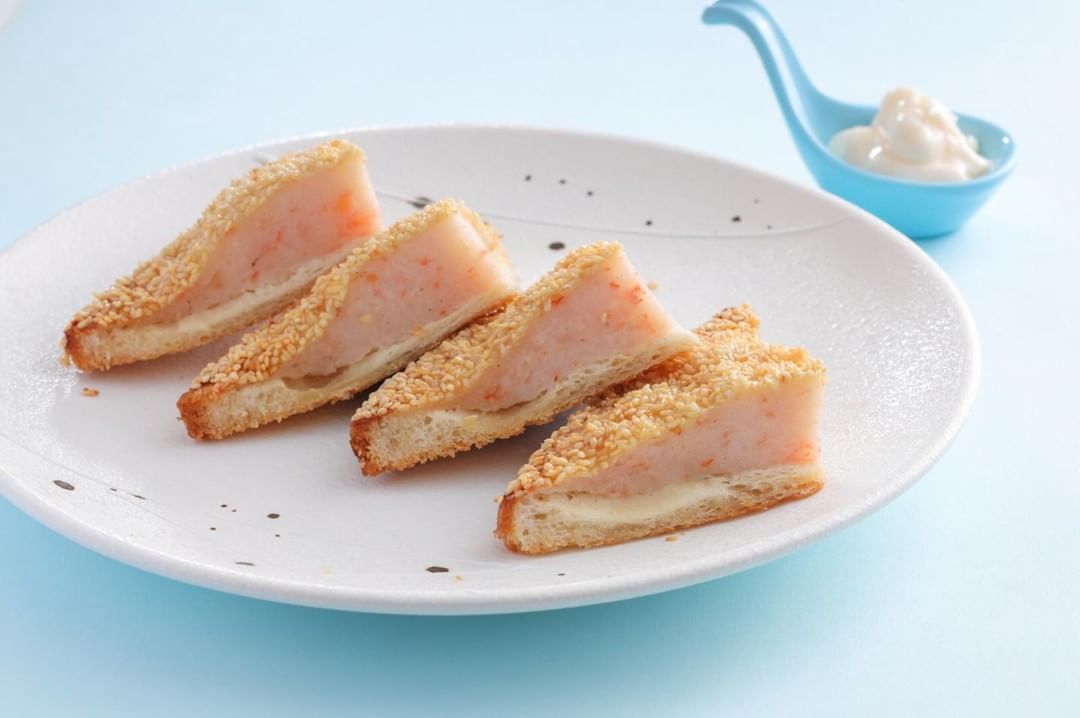
Nestled in the trendy neighbourhood of Sai Ying Pun, this teahouse is home not only to delicious dim sum originals like cheung fun rice rolls and sesame prawn toasts, but also its famous signature dish: a twist on Cantonese-style French toast. While the usual version has a peanut butter filling, Chau Kee instead replaces this with options of sesame, taro (a starchy root vegetable native to SouthEast Asia) or my personal favourite, salted egg lava custard.
I have watched countless viral videos of excited customers cutting their inches-thick, honey drenched toasts in half, cheering as their brightly coloured goo of choice oozes out and submerges the plate. It’s a unique and modern twist on a traditional Cantonese dish.
Shop H1, G/F, Tung Lee Mansion, 1C-1K Water Street
Lin Heung Kui
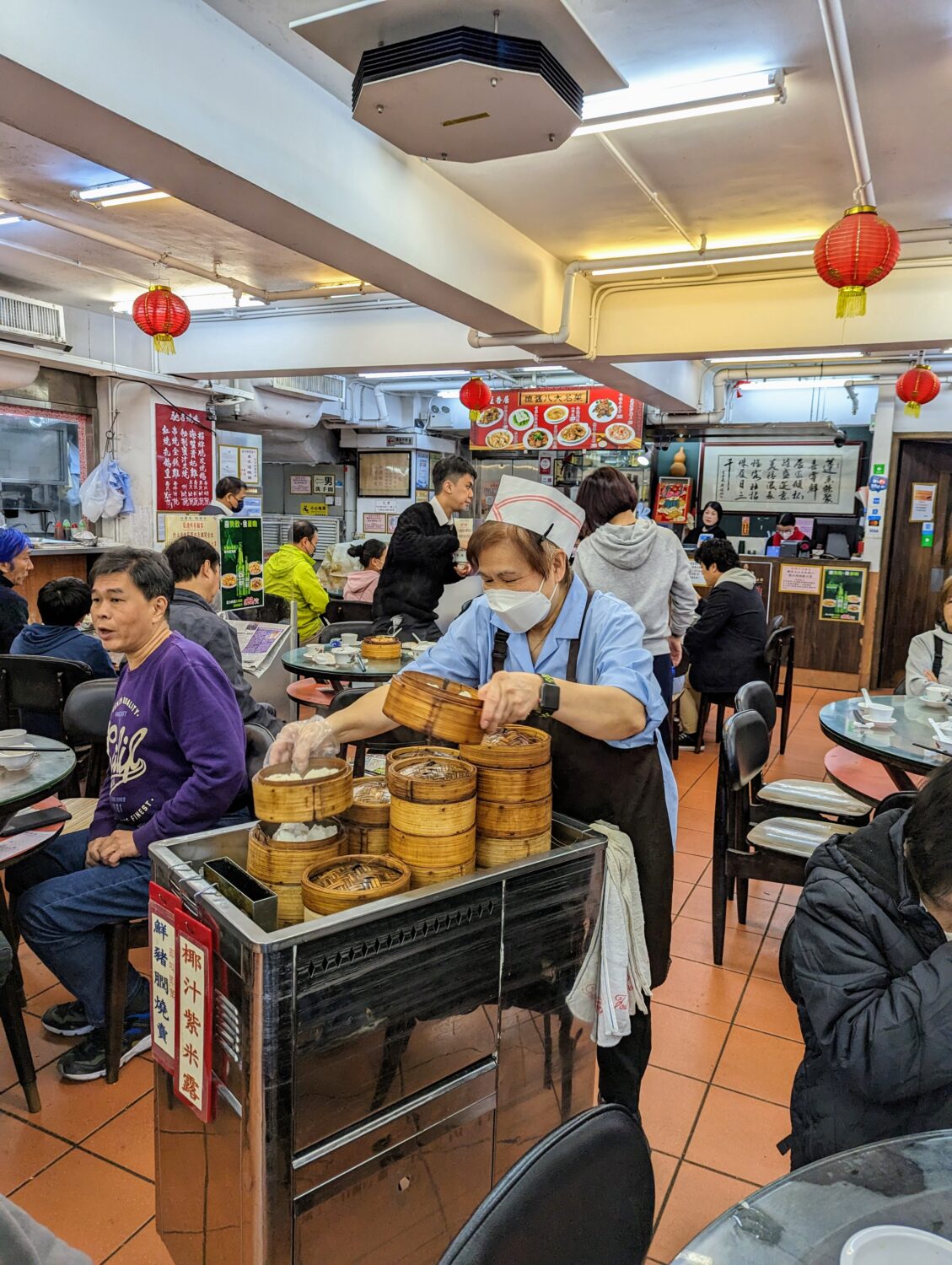
This rustic teahouse in Sheung Wan was the sister restaurant of Lin Heung Tea House, a nostalgic institution that had been operating in Hong Kong for over 100 years before it shut in 2022. Thankfully, Ling Heung Kui provides a similar energetic charm, honouring the traditional dim sum experience in a casual environment, with red lanterns hanging sporadically from the ceiling. This place is not for everyone (there are reviews online from Western tourists, which should be taken with a pinch of salt, complaining about bad service) – but the food is Michelin-recommended and the chaos is part of the experience.
Prepare to share a round table with other guests (usually older uncles who sit on their own reading a newspaper) and expect a noisy atmosphere with zero table service. Instead, you need to chase down efficient aunties wheeling around push carts of bamboo baskets. Once you’ve managed to claim part of a table, you will be handed an order form that the aunties will stamp each time you take something from their carts – and you can bring this slip of paper to the cashier to pay your bill at the end. Part of the charm is that you are at the whim of whatever the push cart holds: so don’t be afraid to open the stacks of steamed baskets, peer inside and take your pick of what’s on offer. Just to note, Google mistakenly says this restaurant is closed (because the owners are in the process of changing its name) but you can still find it at the address below.
2-3/F, 46-50 Des Voeux Road West, Sheung Wan
Elaine Zhao is a London-based freelance writer from Hong Kong who is deeply interested in covering the experience of all things culture, particularly through an East and South East Asian lens. Header image by by Jimmy Chan / Pexels.